Communicating wine: the global vision of Giovanni Minetti.
Intervista a Giovanni Minetti: comunicare il vino from SGA Wine design on Vimeo.
An interview with Giovanni Minetti, professor of agronomy specialised in viticulture and enology at the Agricultural Faculty of the University of Turin, who began his career as a an agricultural engineer at the Alta Langa mountain community. In 1979 he began working as a an executive and then director for Regione Piemonte, at the Agriculture and Forestry department; between 1992 and 1996, still with the Regione Piemonte, he assumed the role of director of the viticultural department. Between 1982 and 1996 he was also the director of the Enoteca Regionale del Barolo. For 17 years he was then the managing director of the historic Fontanafredda estate in Serralunga d’Alba. Minetti was named president of the Consorzio di Tutela del Barolo, Barbaresco, Alba, Langhe e Roero on 15 January 2001, and held the position for six years. After the creation and launch of the internationalisation project “Nuovimondi” for the producers’ association Vignaioli Piemontesi, since September 2014 he has been the managing director of Terre Miroglio, an organisation that unites the historic Tenuta Carretta, an estate in the production area of Roero; the Malgrà company, in Mombaruzzo, a producer faithful to the traditions of the classic wines of Monferrato, and the Edoardo Miroglio Wine-cellar, a producer with over 150 hectares of vineyards in Tracia, an ancient territory with more than 5000 vineyards.
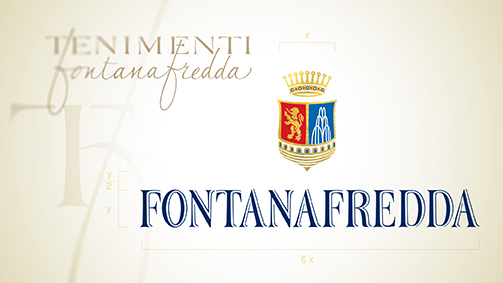
Brand design
What where the key stages of your professional development?
After getting my high school diploma, a degree in Agricultural Sciences and my specialisation in Viticulture and enology, the first fundamental step in my career was winning a selection and entering Regione Piemonte, initially as an expert and then as the Assessor of Agriculture. My first position was in Cuneo, and after a few months I was transferred to Alba, in the trenches, getting to know the wine producers first hand: this experience gave me a significant insight into the world of vines and wines in Piedmont. A few years later, as an expert with Regione Piemonte, I was asked to assume responsibility for the Enoteca Regionale of Barolo, based in Castello di Barolo: both a cultural and technical experience that taught me how the world of Barolo is structured in terms of its operations and producers. This knowledge grew further when in 1996 I was called to take on the role of Managing Director of a company like Fontanafredda, which had constructed and represented the history of Barolo over the last 150 years. These key stages of my career were interspersed with other experiences as a journalist and meeting Gino Veronelli, who made me realise the importance of critics in the world of wine and the importance of the image of the company perceived by the market. These milestones mark out what has been an interesting career path, and I’m not at the end yet. During this time I have matured a complete picture of the world of wine from a technical and legislative perspective, and in terms of production, the market, marketing and commerce.
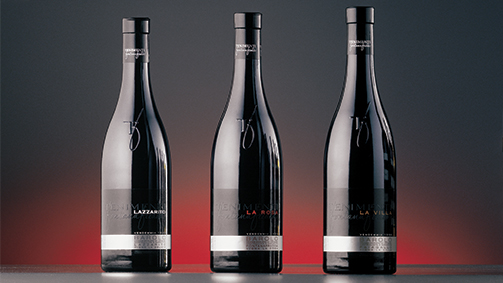
Original packaging of Le Vigne
What are the differences between the promotion and communication of wine at the start of your career and how it is done today?
Until the 1980s it was difficult to find great quality wine. Only a few producers focused on the quality of the product, and even fewer concerned themselves with how it was presented. Today the situation is completely different, quality has become a prerequisite, and other values now make the difference: the way the wine is presented, the packaging, the choice of bottle, the cork, all of which contributes to the product’s image. This is the most important change I have witnessed in the last twenty years. In the same time, I have seen a shift in the channels of communication, the relationship with the press, with the clients, and with the intermediaries (agents, wholesalers, restaurant owners), who was perhaps a stronger figure in the 80s. Today the consumer, with the help of media and the internet, wants to by-pass this channel and purchase directly from the producer. It is clear that this more direct approach opens questions on the function of the trade: I am convinced that it must evolve towards better customer service. This is where the smart money is today.
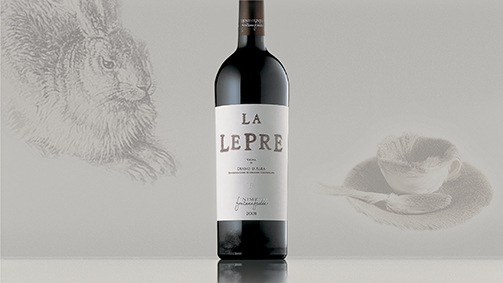
Original packaging of La Lepre
Regarding this new way of communicating with the public, are there still differences between the approaches of the institutional sector and those of the private sector?
As I see it, the job of the institution must be to act as the catalyst between the production and the market. Their role must be that of facilitator: the institution should bring together the companies and bring them closer to the market, creating at the same time situations that encourage the market to come to meet the companies.
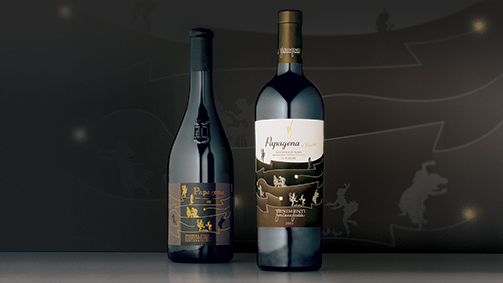
Restyling of Papagena
Barolo: what are the objectives and contents that will be outlined in the future for this wine and this territory?
Barolo is a flagship wine, an undisputed symbol that has spearheaded the growth of the territory. The question of the evolution of the name remains open, even if all things considered, we have already reached an important milestone from this perspective: after decades of discussions we have managed to delineate and identify additional geographical areas. We managed to map out the Barolo territory, giving a name to every micro-area (the so-called “cru”, or sub-zones) and putting a definitive end to litigations over labels, where some claims were legitimate, others probably false. It is a clear sign for both the market and the production: today everyone can work towards raising the value of well-defined denominations within the world of Barolo. Now the challenge passes to the market, which will be a fair judge as always: of 172 additional geographical denominations, only around forty will be recognised, while the others will be forgotten. But the important thing is that they are clearly defined and the boundaries distinct, so that from now on the situation of Barolo wines is clear and not subject to change, as it is in Barbaresco.
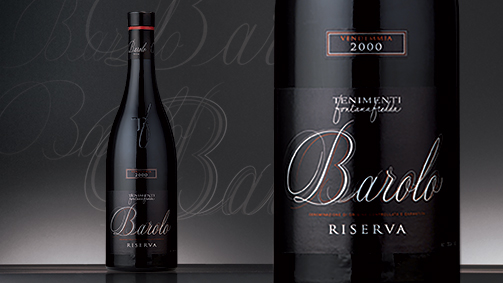
Original packaging of Barolo Riserva
There is talk of a new project that involves the creation and launch of a new label and the fine tuning of commercial strategies that are waning on the foreign markets, and that will concern some of the most dynamic producers in Piedmont. Can you tell us more?
It’s an ambitious project that mainly involves an area of Piedmont (not just Barolo) and aims to unite the production of several cooperative wineries agricultural companies under a single label. The idea is to begin from the vineyard, imparting particular protocols of vinification, to achieve a dual result: first of all a production of higher quality, and then a concrete support of the world of the cooperation. These protocols, which we’re now in the process of elaborating , will initially be applied to produce a limited number of bottles, but we think and believe that they will be implemented on a more general scale, so that all the producers make them their own.
There are already protocols in place at the vineyards, which in recent years have spread significantly: there’s still much room for improvement at the wineries, but there are already products of extremely high quality that are relatively unknown to consumers. One of the objectives of this label is to raise its profile and seek out a market that recognises its quality and therefore is willing to pay for it.
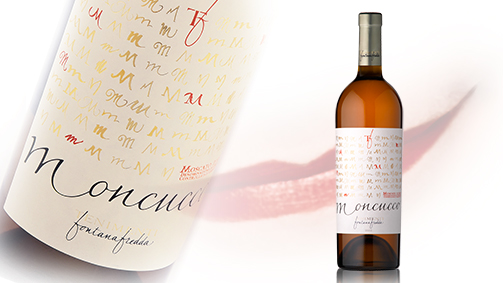
Original packaging of Moncucco
Which markets are most interesting and for which wines?
The market that is showing the most promise at the moment is the Chinese market: the prospects for growth over the next 10 years are enormous. It is quite a surprising market since substantially the Chinese are not huge wine consumers: it is still unknown and chosen for special occasions. As far as the wines of Piedmont are concerned, China is interested in at least 3: Barolo, renowned for its quality, Barbera (both d’Alba and d’Asti), and the sweet wines (Moscato d’Asti and Brachetto d’Acqui), which go perfectly with the cuisine of the east coast. Barbera, Nebbiolo and Barolo are more popular in the central regions, as they better accompany the stronger flavours of the cuisine inland. There’s another particular aspect that makes the Chinese market interesting, which is tannins: the tannins of Barolo, Nebbiolo, and Dolcetto are very similar to the tannins in tea. This cultural affinity is creating some unexpected situations, and we’re realising that the Chinese feel ‘at home’ drinking wine, much more than we could have imagined. The extraordinary potential of China must not lead us to forget about other countries, the traditional markets for our products. We need to pay particular attrition to northern Europe, which is open to everything Piedmont has to offer: from the most expensive wines to the cheapest, reds, whites, sweet and sparkling. On a more sorry note regarding the success of our wine on the world stage, we have not yet managed to get an Italian standard of our dry sparkling wine to take off, and this continues to create numerous obstacles to the market of the Metodo Classico, it is very difficult.
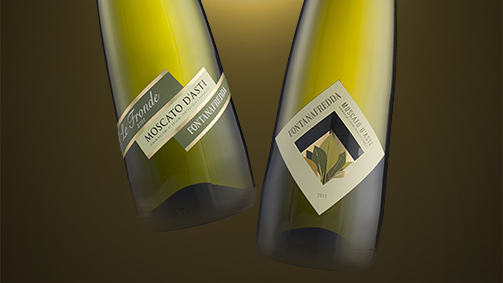
Packaging originale Moscato d’Asti e Le Fronde
In relation to these markets and their diversity, does the communication change? And if so, in what way?
China has very clear preferences: some colours are accepted and others not. They like bottles that recall Italian style and elegance, but at the same time they like gold decorations and red embellishments, as wine is above all a gift in China, the more lavish looking the bottle, the greater the perceived value. When designing a label for the Chinese market one faces a specific challenge, to unite seemingly contrasting elements.
In other parts of the world, everything is more subtle: normally on the American, Scandinavian, German, or English markets, the image and packaging used for the Italian market are equally effective.
South America on the other hand is a rather closed market, with the exception of a few footholds in Brazil: our wines are seen as too expensive, and suffer the competition of Argentinian, Chilean and Brazilian wines, available at much lower prices. It is true that Italian wine has its own image: nowadays wine is sold as an expression of culture and territory, therefore as something that characterises a way of life. And this is what makes us competitive, despite the fact that our prices are not; on one hand, if we accepted price war and competed in this respect, we would always come off worse, as the production costs in South America are ten times less than they are here. On the other hand, we are entering and consolidating foreign markets due to the very fact that we are Italian, that we are from Piedmont, the Langhe, and therefore we are able to create an air of the territory and cultural context in which the wines are produced.
I believe strongly in the ‘incoming’, I believe in the growth of wine tourism. The consumer no longer trusts what he reads, or what he sees in the media: he wants confirmation himself, he wants to meet the producer, talk to him and see how he lives, works, understand the product and have it explained. This aspect is fundamental. On a personal level, it has convinced me to invest in a print and online magazine called Wine Pass, which aims to act as a go-between to bring the producer closer to the tourist and consumer.
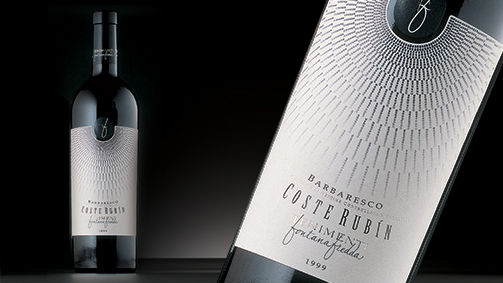
Original packaging of Coste Rubín


